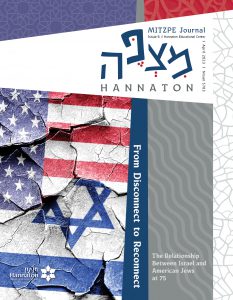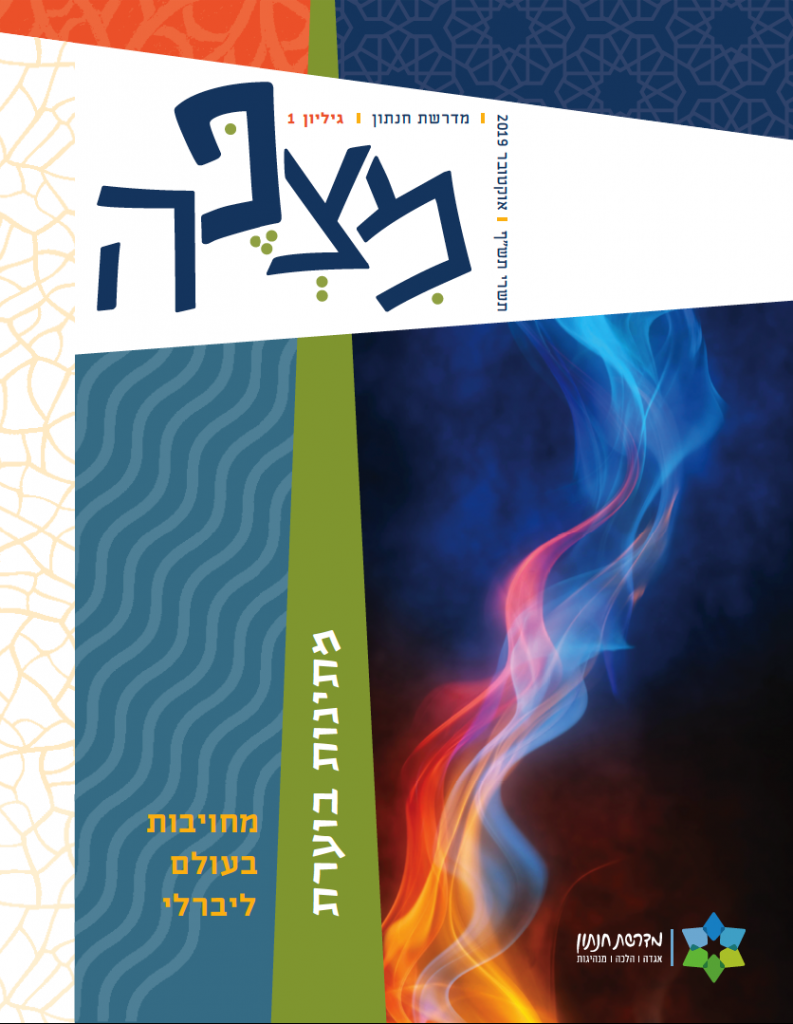Masses of Gentiles in the Jewish State
Close to the beginning of the third decade of the third millennium, during the first week of the year 2020, a statement by Rabbi Yitzhak Yosef, the Sephardi chief rabbi of the State of Israel, about the Russian Aliyah was made public and stirred up a minor kerfuffle. The Ynet news site covered the speech as follows:
Chief Rabbi in Sharp Attack on Immigrants: “Masses of religion-hating gentiles. Non-Jews. Communists. Some of them go to church.”—In documentation that has been attained by Ynet, the Sephardi Chief Rabbi Yitzhak Yosef lashes out at immigrants from the former Soviet Union, arguing that they were brought to Israel in order to constitute “a counterweight to the haredim.” He attacked their conversion—including those done in rabbinic courts under his authority—and called for them not to be automatically recognized as Jews. (Ynet, January 7, 2020)
The website of the Ha’aretz newspaper added these instructive quotations:
Yosef said, “I don’t know the exact figure, I didn’t check into it but it’s clear there are at least tens of thousands, masses of Gentiles, whose grandfathers were Jewish and their mothers and grandmothers were goyim [gentiles], and they were allowed to immigrate to Israel. There are many, many goyim here, some of them Communists, hostile to religion, haters of religion. They aren’t Jews at all, but goyim.”
From the chief rabbi’s words one might understand that the large wave of Russian immigration in the 1990s spoils the homogeneous picture that prevailed here before then. The Jews of the former Soviet Union, who went through the Communist melting pot, married non-Jews in large numbers and, with the collapse of the walls, came to the Jewish state and spoiled things. Now foreign elements, hostile in part to Judaism, have become mixed into the Hebrew-speaking population in this country.
The chief rabbi is not the only one to hold this picture of reality; many Israelis share it. In our collective public imagination, the State of Israel is the state of the Jews. While many Arabs live here, and they were the local population before the Zionist chapter of the country’s history, the waves of Aliyah gathered in only Jews from across the globe. The Hebrew speakers in this country are of pure Jewish ancestry, a mixed population with regard to ethnic community but not religion, and only the recent Russian immigrants, together with a few infiltrators who managed to get past the Jewishness sensor installed at the gates to Israeli citizenship, spoil the picture; that is, spoil the pure Jewish pedigree of the Jewish state.
The vision of Jewish genealogical purity is not new. This is an ancient myth with deep roots, which plays a significant role in Jewish history. In times of rise and restoration, such as the Return to Zion in the time of Ezra and Nehemiah, it serves as a necessary boundary marker indicating who belonged and were welcomed into the task of restoration and who remained outside. During the long years of exile, the importance of tracing people’s lineage was even greater, as an indicator of the virtual boundaries of a community without physical boundaries, and also as the glue uniting distant communities in a feeling of brotherhood and partnership that spanned the whole world. Those feelings of brotherhood and communal and intra-communal blood ties served, and still serve—as the platform for innumerable cooperative efforts and mutual aid—amazing undertakings of surprising strength, which often brought together total strangers living thousands of miles from one another. The assistance provided by American Jewry in the establishment of the State of Israel; the American-Israeli struggle for the liberation of the Jews of the Soviet Union before the fall of the Iron Curtain; finding and rescuing the Beta Israel of Ethiopia, first by American Jewry and later by the State of Israel—all of these are outstanding, amazing examples from the recent past.
The widest ideational and literary underpinning to the concept of Jewish genealogical purity is found in the last chapter of the Tractate Qiddushin in the Mishnah and the Babylonian Talmud. On those pages, axioms are stated, hierarchies and laws appear that have shaped Jewish consciousness for many generations, to this very day. Reading them reveals contemporary issues in ancient garb. A further, deeper reading reveals an incomparably more fascinating and complex picture: The claim of pure blood lines is advanced—and refuted again and again. The portrait of the Jewish community built on foundations of known blood connections and an ancient chain of relationships is built and then collapses, is presented and again unravels, gels and suddenly melts away, over and over, in a cyclical movement from which the rational inference can only be: what he have here is a myth. A myth whose life extends far past our own, a myth we choose to believe, a myth whose pattern is to reappear again and again, a myth that contains an enormous psychological or sociological truth, even if it does not contain solid historical facts.
The myth of Jewish genealogical purity is unknown in sources from the First Temple period. The Hebrew Bible reports on various groups who lived here in that period, and some of them integrate well into Israelite society as it first took shape. Biblical heroes marry local foreign women, and their children become completely Israelite, even esteemed kings. This is true, for example, of the children of Jacob’s son Judah with “the daughter of a Caananite man named Shua” (Gen. 38:2). Similarly part of the Israelite nation were King David, whose grandmother was a Moabite, and his son Solomon, whose mother Bathsheba was the widow of Uriah the Hittite, and many other fine biblical characters. The turnabout came at the beginning of the Second Temple period. The Jews exiled to Babylon returned to Eretz Yisrael with a clearer vision regarding who is an Israelite, which then became the question of “Who is a Jew?” Under the leadership of Ezra and Nehemiah, local groups that had not been through the crucible of Babylonian exile (such as the Samaritans and others; see, e.g., Neh. 13) were pushed aside from the project of Shivat Tsiyyon (the return to Zion and the restoration of Judah’s national life). Non-Jewish wives who had married men of the Jewish community were expelled (although their divorce and expulsion appears to have been merely symbolic; see Ezra, chapters 9–10).
The full, explicit formulation of the new principles of belonging was the work of the Sages of formative rabbinic Judaism, the Tannaim and the Amoraim of the first centuries CE, while living in Eretz Yisrael and in Babylonia in the centuries after the destruction of the Second Temple. The Sages formed the new principles of Jewish belonging, and at the same time they were aware of the impossibility of implementing them. How did they do that? We have insufficient space here to go into detail, but I will try to give a capsule summary by example.
In truth, we don’t know where we came from. The purity of the Jewish people has not been preserved.
Ten Family Stocks (Yuḥasin)
The central mishnah that lays the foundations for the “new Jewish order” is the first Mishnah in the last chapter of Tractate Qiddushin:
Ten family stocks came up from Babylon: the Priestly, Levitical, and Israelite stocks, the impaired priestly stocks, the proselyte, freedman, bastard, and natin [a person of a lower social status, blocked from marrying proper Jews, whom tradition identifies as a descendant of the Gibeonites] stocks, and the shetuki [“silent” (when asked about lineage)] and asufi [“foundling”] stocks. The Priestly, Levitical, and Israelite stocks may intermarry; the Levitical, Israelite, impaired priestly stocks, proselyte, and freedman stocks may intermarry; the proselyte, freedman, bastard, natin stocks, shetuki, and asufi stocks may all intermarry. (m. Qidd. 4:1)
The Mishnah sets out ten categories of status that compose the Jewish people in the era of Shivat Tsiyyon, the beginning of the Second Temple era. Those status-categories are listed from the highest, the Kohen [priest], to the lowest, the asufi [foundling], who doesn’t know who his parents are. This list is new. Some of its components appear as early as the Bible, such as the Kohanim, the Levi’im, and the garden variety Israelites, while some of its components are new, such as the freedmen (manumitted slaves) and the shetukim (those who know their mother’s identity, but not that of their fathers). This is an easygoing list: one can join the Jewish people (e.g., the proselytes, the freed slaves, the foundling whose parents may not be Jews), and there is a certain possibility of climbing the latter of genealogical status by marriage ties, as the second half of the mishnah lists in detail. In any case, this mishnah, along with the ones before it and after it, maps out for the first time clear boundaries of belonging and specifies different types and levels of those defined as Jews. Many more laws and long discussions of the Sages detail the status of all the limit cases they want to bring into the Jewish group (proselytes, for example) or keep out (sons of a Jewish father and a non-Jewish mother, for example).
Did the ten family stocks usher in a new era in Jewish history, neatly arranged and purified of unwelcome additions? The Talmuds written as commentary on the Mishnah may shed light on that question. The impression that emerges from looking into them is that the detailed, organized hierarchy of the Mishnah remained only on paper.
Pure Sifted Flower and Mixed Dough
The Babylonian Talmud begins the fourth chapter of Tractate Qiddushin with a dramatic turn: If all these family stocks came up from Babylonia to the Land of Israel, who was left in Babylonia? Here is the Talmud’s answer:
For R. Eleazar said: Ezra did not go up from Babylon until he made it like pure sifted flour: then he went up! […] Thus Rav Yehuda said in Shemuel’s name: All countries are as dough [a mixture of flour and water] in comparison with Palestine, and Palestine is as dough relative to Babylon. (b. Qidd. 69b)
These two Amoraic statements are the opening to a discussion of genealogical purity, and they reappear a few times in the Talmud pages devoted to that discussion (b. Qidd. 69b–80b). The Babylonian Talmud reads into the Mishnah, from Eretz Yisrael, something the Mishnah does not say and never intended to say. The Talmud argues repeatedly that the Mishnah shows that Ezra took with him to Eretz Yisrael all those disqualified from being considered Jews and all those of questionable status, thus purifying Babylonian Jewry and making of it “pure sifted flour,” dry and of high quality, as opposed to Eretz Yisrael, whose community was mixed like moist, sticky dough. So it happened that since Ezra’s time, Babylonian Jewry is more pure-bred than the world’s Jewish communities at large, and more so than Palestinian Jewry in particular. So, for example:
Babylon stands in the presumption of being fit, until you know how it became unfit; other countries are presumed to be unfit, until you know how they are fit. (b. Qidd. 71a)
Babylon is healthy [i.e., of pure Jewish descent]; Mesene is dead [none are proper Jews]; Media is sick, and Elam is dying. (b. Qidd. 71b)
It seems that at some time or another the “genealogical purity meter” reading became the main topic of competition and struggle for primacy between the central Jewish communities of that time, those of Eretz Yisrael and Babylonia. In that competition, the Babylonians started off at a disadvantage, living as they did in Babylonia and not the Holy Land. In place of that obvious lacuna, though, the Babylonian Jews established an alternative criterion for their Jewish identity, which they thought preferable: their genealogical purity. In their opinion, they and only they were “true” Jews of genealogical purity who only married each other and did not marry or mix into other populations.
Follow the Silence
In truth, there is no reason not to believe the Babylonians. We certainly would have assumed that indeed the Babylonian community did better than others at guarding its Jewish genealogy, were they not to have themselves testified that the situation was, in reality, totally different. Further on in the sugya (literary unit deliberating about one topic), in the midst of discussion, testimony, stories, and debates of various sorts, the claim of superiority is disproven and the actual truth is revealed. So, for example, we read:
Rav Yehuda announced in Pumbeditha: Adda and Jonathan are slaves; Yehuda b. Papa is a mamzer; Bati b. Tobiah in his arrogance refused to accept a deed of manumission. Raba proclaimed in Mahuza: The members of Bela, Dena, Tela, Mela and Zega—all these are unfit. Rav Yehuda said: The members of Guba are Gibeonites; Durnunitha is a village of netinim. R. Joseph said: This Be Kubi [in the Vicinity] of Pumbeditha consists entirely of [the descendants of] slaves. Rav Yehuda said in Shemuel’s name: Pashur son of Immer had four hundred slaves—others say, four thousand slaves—and all became mixed up in the priesthood, and every priest who displays impudence is [descended] from none but them. Said Abaye: And they all dwell in the row [for distinguished individuals in the synagogue] of Nehardea. (b. Qidd. 70b)
There is [a town] Humania in Babylon, which consists entirely of Ammonites; there is Misgaria in Babylon, consisting entirely of mamzerim. (b. Qidd. 72a)
Contrary to the proclamations about genealogical purity, a series of prominent, important sages, outstanding among them Rav Yehuda, testify here: Woe is us, the Jewish community of Babylonia is full of people, families, communities, and entire populations of non-Jewish origin who have become mixed in beyond recognition and assimilated into the community, and even into the priesthood. The myth of genealogical purity that was flaunted by one sage at the beginning of the sugya and was trotted out occasionally in the course of deliberation, is smashed to bits against the many testimonies to a totally different reality.
“All families stand in the presumption of fitness”—if they attach themselves to the people, the land and the State of Israel.
This blemished reality was very irksome to Rav Yehuda, the great leader, the conservative and purist. It bothered him so much that he had trouble finding a worthy match for his son, lest the intended bride’s family too be among those disqualified from being considered Jews who had infiltrated the community’s ranks. The adult son lived in his parents’ home, until one day a sage arrived for a visit from the Land of Israel:
‘Ulla visited Rav Yehuda in Pumbeditha. Seeing that R. Isaac, the son of Rav Yehuda, was grown up, yet unmarried, he asked him, “Why have you not taken a wife for your son?” “Do I then know whence to take one [whose pedigree I can be sure of]?” he replied. “Do we know whence we are descended?” he [‘Ulla] retorted. “Perhaps [we are descended] from those of whom it is written: ‘They ravished the women in Zion, the maidens in the cities of Judah’ (Lam. 5:11). And […] perhaps [we are descended] from those of whom it is written, ‘that lie upon beds of ivory, and stretch themselves [seruḥim] upon their couches […] (Amos 6:4).’” […]. “This refers to people who eat and drink together, join their beds together, exchange their wives, and make their beds foul [masriḥim] with semen that is not theirs.” “Then what shall I do?” he [Rav Yehuda] asked. “Follow the silence,” he [‘Ulla] replied. (b. Qidd. 71b)
‘Ulla, from the Land of Israel, comes to the home of the Rav Yehuda, the famous Babylonian sage, founder of the academy at Pumbeditha. As the Hebrew saying has it, “a guest for a moment sees every fault,” and ‘Ulla perceives the cloud of concern over the family members. The adult son’s single status is a source of pain that the guest identifies, and he asks his host about it.
Rav Yehuda does not hesitate to reveal to ‘Ulla his uncertainty and his sorrow. He is hesitant to marry off his son to a woman, any woman, since he does not trust the genealogy of the people of his community. Every one of them is suspect in his eyes. Rav Yehuda’s worries about the purity of his family line are so obsessive that they prevent him from accepting any possible match for his son, lest his pure line be sullied. In the context of a desire for a sterile arrangement, any potential match is perceived as a threat. In contrast to the image of pure sifted flour that he himself had quoted from his teachers, it becomes clear that Rav Yehuda, the same Rav Yehuda of whom it is said earlier that he knows precisely which families are of disqualified lineage, in this regard actually trusts no one at all in his community and does not believe in the fitness of any Babylonian Jewish family.
‘Ulla responds by taking Rav Yehuda’s side: In fact, none of us knows where we came from. The Jews in Babylonia and the Land of Israel alike are the descendants of generations in which there were children born from inappropriately matched couples, as the result of the rape of Jewish women during the war and the ensuing catastrophe, as the Book of Lamentations testifies, or as the result of sexual licentiousness in times of quiet and prosperity, as the Book of Amos hints, castigating Israel for that. The purity of the Jewish people has never been kept, and we too, ‘Ulla argues, do not know for certain whether in fact our familial and national roots are pure.
‘Ulla’s words to Rav Yehuda profoundly undermine the entire myth of Jewish genealogy and the claims of one community to be superior to another. ‘Ulla ascribes them all to one circle of identity: we are all Jews, but each of us grows from a family tree that may well be somehow tainted.
To Rav Yehuda’s question about what can be done, ‘Ulla suggests to him: Follow the silence. Dealing with some things in our lives is liable to embitter our lives and even to prevent the continuity of Jewish life and existence, and silence is the only appropriate response to them.
A Family that Has Mixed In—Has Mixed In
So how is it possible to bridge the gap between the ideas of wholeness and the desire for purity and the mixed and sullied reality, and between the noble myth and the naked, revealed truth? If we look between the conflicting, contradictory lines of the Babylonian genealogical sugya, Rav Yehuda himself, perhaps after that visit from ‘Ulla, points out the solution provided by his teachers, Rav and Shemu’el:
Rav Yehuda said in Shemuel's name: “This [view of Babylonian Jewish genealogical purity] is R. Meir’s view. But the Sages maintain: ‘All countries have the legal status of fitness.’” (b. Qidd. 72b)
Rav Yehuda said in Rav’s name: “This is R. Meir’s view. But the Sages maintain: ‘All families have the legal status of fitness.’” (b. Qidd. 76b and elsewhere)
“It is possible,” Rav Yehuda says, “to cling to pedigree investigations, to keep lists and black books, to declare families and communities unfit, and to issue tough pronouncements about whole populations. This is Rabbi Meir’s approach (or that of Rabbi Yitzhak Yosef), but that’s not my way of doing things. I chose to follow the suggestion of the sages (such as ‘Ulla, apparently) to relate to every Jewish community as ‘kosher’ in principle, and to relate to every family that belongs to such a community as ‘kosher.’ ‘All families have the legal status of fitness’—if they simply belong and identify themselves as part of the Jewish community, the people Israel, the Land of Israel, and the State of Israel.” And the Babylonian Rabbi Yitzḥak simplifies the principle even further:
Said R. Yitzḥak: The Holy One, blessed be He, acted charitably toward Israel, in that a family once mixed in—is mixed in [and remains so]. (b. Qidd. 71a)
A family that has assimilated into the Jewish community remains inside. It’s so simple. A family that lives among us, regards itself as Jewish, has assimilated into us—has become Jewish. It does not defile us, but rather is part of our rank and file. In any case, our myth of genealogical purity is just a myth, not a reality. Such a family is deeply imbedded among and within us, part of a comfortable, flexible Jewish identity, perhaps of less purity of pedigree but certainly more pure in its attitude toward others in general, and toward those who want to share in that identity in particular.





